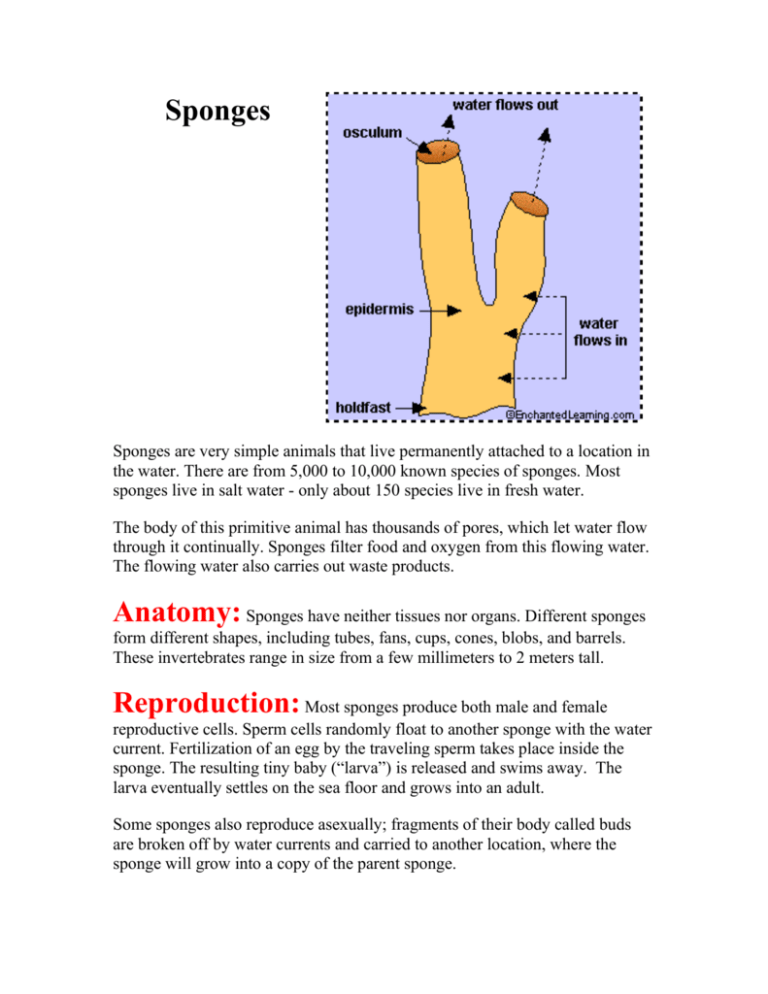Sponge Anatomy & Reproduction Worksheet
advertisement

Sponges Sponges are very simple animals that live permanently attached to a location in the water. There are from 5,000 to 10,000 known species of sponges. Most sponges live in salt water - only about 150 species live in fresh water. The body of this primitive animal has thousands of pores, which let water flow through it continually. Sponges filter food and oxygen from this flowing water. The flowing water also carries out waste products. Anatomy: Sponges have neither tissues nor organs. Different sponges form different shapes, including tubes, fans, cups, cones, blobs, and barrels. These invertebrates range in size from a few millimeters to 2 meters tall. Reproduction: Most sponges produce both male and female reproductive cells. Sperm cells randomly float to another sponge with the water current. Fertilization of an egg by the traveling sperm takes place inside the sponge. The resulting tiny baby (“larva”) is released and swims away. The larva eventually settles on the sea floor and grows into an adult. Some sponges also reproduce asexually; fragments of their body called buds are broken off by water currents and carried to another location, where the sponge will grow into a copy of the parent sponge. Practice Labeling the Sponge Diagram Using the definitions listed below, label the sponge and the flow of water through it. epidermis - the layer of cells that covers the outer surface of the sponge. holdfast - root-like tendrils that attach the sponge to rocks. osculum - the large openings in a sponge through which water flows out of the sponge. Sponges may have more than one oscula. water flows in - water flows into a sponge through pores (holes) located all over its body. The sponge obtains its nutrients and oxygen by processing this flowing water. water flows out - water flows out of a sponge through large openings called oscula.











